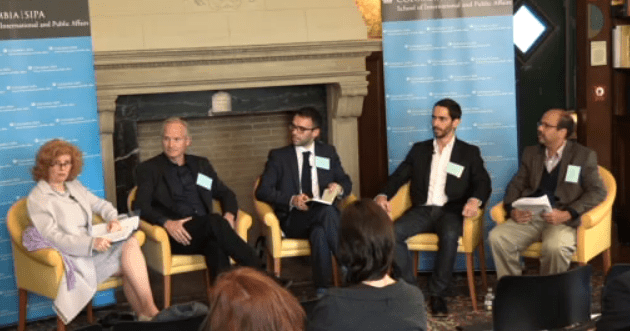Last week, Columbia University’s School of International and Public Affairs (SIPA), in collaboration with the Global Commission on Internet Governance (GCIG), hosted a conference on Internet governance and cybersecurity. The conference gathered a variety of experts to discuss issues pertaining to Internet governance, human rights, data protection and privacy, digital trade, innovation and security.
The narrative of the conference was consistent with the challenges that we see currently in the Internet ecosystem, both in terms of technology as well as the way we view the Internet as a tool of social and political empowerment. Data localization, increasing amount of regulation and accountability were themes that proliferated in the two day discussions as they do in most such conferences. But, in the context, of the key elements that occupy (or should occupy) the attention of policy makers, technologists and users, two were especially highlighted: trust and collaboration.
By now, we are all aware that trust in the Internet has been seriously eroded. Over the past couple of years, various event have slowly, but progressively, eradicated much of the blind trust we previously held towards the Internet; nowadays, for instance, we are fully aware (if not, we should be) that use of the Internet comes with a certain degree of privacy concessions.
This loss of trust in the Internet creates two main problems:
- It displaces the root of the problem.
- How do we restore that trust?
As some panelists observed, the issue of the lack of trust in the Internet has nothing to do with the Internet itself, rather with the way governments, businesses and other actors abuse its technology to spy, monitor, observe and map the behavioral patterns of users. Some discussants recognized trust as an important element in information technology and compared its lost of trust to the one within financial institutions some years ago. After the global financial crisis, trust in the financial institutions, their mission, role and ability to secure consumers’ future was completely lost. And, although we have now escaped the probability of a global financial collapse, trust in these institutions still ranks significantly low.
We should not let the same happen to the Internet. We need to understand that arrangements of technical infrastructure are, in essence, arrangements of power; but, as it was accurately pointed out, we also need to be fully aware of the fact that different parts of the Internet’s architecture, command different levels of governance – the technical, legal and, moral triad.
Which brings me to the second key element – collaboration. Although most of the panelists discussed this in the context of security, participants reminded to the audience that the genesis and evolution of the Internet is essentially an outcome of the collaborative efforts of a variety of actors. The Internet benefits from the increasing amount of actors that want to team up and work together.
Kathy Brown, President and CEO of the Internet Society, emphasized the Internet Society’s efforts towards a collaborative security framework, stating further that getting communities – in their structured, expertise-based sense – on the table should be our key priority. Collaboration is the only way forward – especially in the current Internet reality. At the end of the day, the best frameworks of regulation and technology come from the collaborative efforts of businesses, the technical community, governments and users.
We are at a tipping point with our approach towards the Internet. But, as one of the panelist said, we should not lose sight of the fact that the Internet is not responsible for the way it is used or abused by the various actors. Once we understand that we should be skeptical to the way its potential can be abused, we should gather together and collaborate to protect it.
This is somewhat the high level conclusion the conference reached. It certainly is nothing new or original. But, it is significant to be reminded that the responsibility lies with all of us.
For more information, see:
- Information about Internet Society activities at the SIPA/GCIG event
- The conference web site
- Video archives of the event panels
- Collaborative Security: An approach to tackling Internet Security issues
- GCIG statement: Toward a Social Compact for Digital Privacy and Security
Photo credit: A screen shot of the live video stream of the SIPA/GCIG event. Konstantinos Komaitis is sitting in the middle seat of the five panelists.

